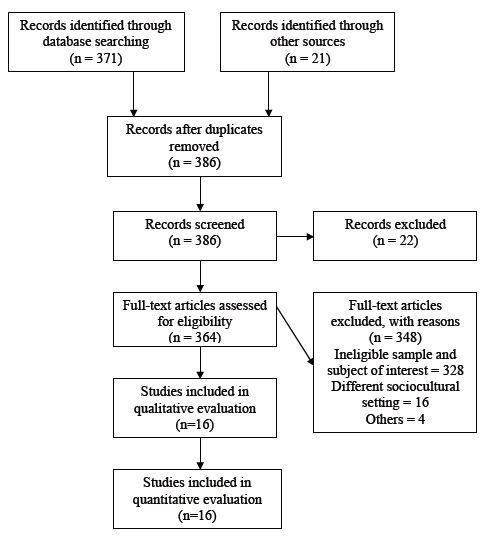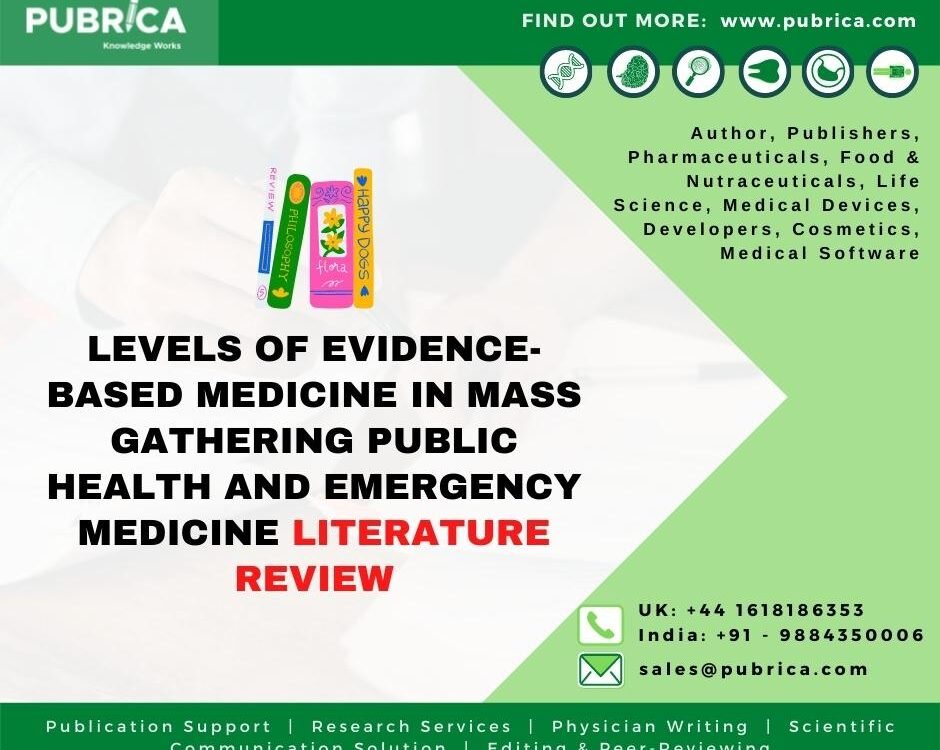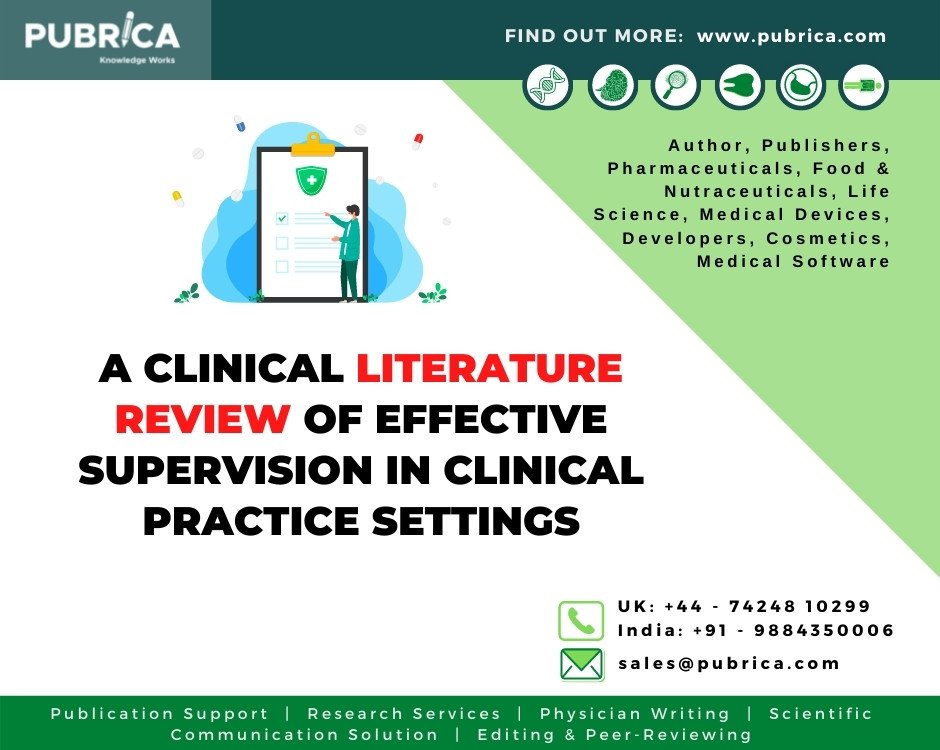
How to structure your Table for Systematic Review and Meta-analysis
August 2, 2021
Reasons behind the production of defected tablets through various processes
August 9, 2021In brief
A review article is a piece of writing that gives a complete and systematic summary of results available in a certain field while also allowing the reader to perceive the subject from a different viewpoint. A review article’s writers conduct a critical study and synthesize, assess, and classify relevant data, finally coming at new cumulative findings based on current investigations by other academics. The purpose might be (a) theory development, (b) theory assessment, (c) a review of the state of knowledge on a specific issue, (d) issue identification, and (e) providing a historical account of the history of theory and research on a certain issue. A review may be important in research and everyday life for a variety of reasons, including policymaking. This article will assist you in producing a meta-analysis-based systematic review article.
Introduction
Important Steps in Systematic Review
When planning and writing a systematic review, it’s helpful to follow the steps below.
i) Objective
The objective of a systematic review is the same as it is for an original research study: the publication must provide something new to the area. The precise goal must be in line with the study questions. In most cases, the objectives are indicated in the last paragraph of the introduction. The goals then influence the methods used to find sources, process them, and deliver the results. In the studies closing section, it should be noted if and to what degree the objectives have been met.
ii) Questionnaires for Research
The research question is contained and articulated in the body of a review article, formulated as the problem: the topic and emphasis of the study. It’s a spiral that creates logical links between the article’s elements; that is, various portions build on and follow up on one another in a logical pattern. In the case of a systematic review, the research question must be matched with the study’s aims and methods, which is especially important for identifying data sources (library searches) and determining study inclusion and exclusion criteria.
iii)Obtain Data Sources—Literature survey
Electronic databases often accessed through university libraries, are the major and most valuable data sources. Because access to certain publications may be restricted due to cost constraints, the university’s resources for journal subscriptions will determine the degree of access offered to students and staff. Databases such as:
- Web of Science
- Medline/PubMed
- EBSCO
- SCOPUS
- ProQuest Central
- PsycARTICLES
iv) Selection Criteria
The relevant articles and whose findings are to be processed are chosen using the categorization criteria listed below.
- The first criterion may be the year of publication, which indicates the period being studied.
- Article Citation: This information may be found in databases, usually under the term citation. Articles with more citations cover more significant research.
- Keywords:These represent the language used in the area and aid in identifying the most pertinent research.
- Article relevance: online databases may provide many articles, but some works may be completely unrelated to the review’s topic due to the potential overlap of key terms and other characteristics. As a result, it’s vital to go through each publication—in most situations, the abstract will suffice—and weed out any research that isn’t relevant.
- Publications types: while you may normally deal with just original and review studies, certain issues may need the use of data from annual reports, research reports, or guidelines. As a result, it’s critical to include these details in the procedure’s description.
- Socio-demographic environment: The study’s description is helpful since it is relevant to the review’s outcomes. As a result, while presenting the study findings, the review must account for this.
Finally, in the discussion part that follows, all of these criteria/indicators will be reviewed and understood.
v) Data Collection procedure
It is necessary to record and document the whole literature search procedure. Peer reviewers pay close attention to how the “data” for the analysis was collected while analyzing systematic reviews. For this reason, particular approaches can be utilized, with the PRISMA research flow diagram being the most widely utilized in modern science. The PRISMA research flow diagram is shown in Figure 1 [1].

Figure 1: PRISMA flow chart [1]
vi) Results from Interpretation
According to the categorization criteria, the research findings you collected will be reported in an organized form-ideally a table. When analyzing the outcomes, it’s a good idea to compare the qualitative and quantitative viewpoints of the investigations. When using a quantitative approach, you can track the number of studies that used a longitudinal versus cross-sectional design, the number of studies that used a standardized methodology versus one developed specifically for the study, and the number of studies that had well-balanced participant samples in terms of representativeness versus those that did not. On the other hand, a qualitative viewpoint allows for examining wider features of the works and finer nuances in the determined results. When reviewing study procedures and findings, various tools may be used as a guide. The CONSORT statement establishes a standardized method for reporting and interpreting the outcomes of randomized clinical trials.
vii)Conclusion
This necessitates you bringing a fresh viewpoint to the subject matter under investigation, highlighting and sharing the findings’ most important findings. Importantly, the commentary should compare and assess the results against other relevant research initiatives rather than the author’s presentation of his or her viewpoints on the subject. Every thought or result given in the paper must also be properly referenced. The conclusion should be a practical evaluation of the research; it should not include any discoveries or evidence. Its goal is to describe the study’s findings and contributions in a concise manner. Although this might be a difficult effort for an inexperienced author, it is critical to master the talent of clearly presenting your thoughts. The conclusion frequently contains suggestions for future study as well as practise instructions. It’s also a good idea to emphasize your review’s unique contributions [2].
Metaanalysis
Metaanalysis is a type of systematic review in which several studies are combined to get aggregate effect estimates. The magnitude of the effect is computed and indexed to do this. Some of these study problems may be better understood by aggregating the impacts and conducting a statistical analysis. There are also parallels with preliminary intervention trials, in which the focus is on the effectiveness of the intervention. In a metaanalysis, however, the researcher examines many studies to assess the size of impacts. To develop a framework for the review, it’s good to use a systematic guideline like PRISMA [3].
Formulating the research question is the initial stage. Determine the keywords you’ll use to search for articles, as well as the period range for which you want articles to be considered, as well as the criteria for inclusion and exclusion. Look for papers that fit your subject and eligibility requirements in the databases you’ve chosen. Once the papers included in the metaanalysis have been found, they must be coded using the variables specified for the metaanalysis. Because coding decisions aren’t always obvious, two rates are frequently utilized to establish a measure of reliability, such as percent agreement or a kappa coefficient. Next, enter the extracted data into a database with pertinent study parameters such as intervention, follow-up periods, sample size, control group type, and research design. To make comparisons and aggregation possible, a “common currency” of effects must be developed.
We’ve created a mechanism for estimating effect sizes, and now we have to aggregate them over all of the papers we’ve looked at to see if there is an impact and what that impact is. A fixed-effects or random-effects strategy can be used to accomplish this. These two approaches deal with study sampling errors. The former assumes that the error in estimating the population effect size is due to random factors associated with subject-level sampling. The latter assumes that study sampling errors are present in addition to subject-level sampling errors. Although the fixed-effects model has more statistical power, the random-effects model is more common due to its better generalizability. The effects of higher sample numbers are more consistent across research and hence more precise. It’s better to utilize specialist statistical tools built for metaanalyses to see if the total effect magnitude differs from zero [4].
A table should be supplied, similar to systematic reviews, summarising all of the papers included in the study and documenting all important aspects, such as author, date of data collection, key result results, and medical data collection techniques. In addition, a forest plot that displays the range of outcomes for each research is frequently provided, demonstrating the range of effects of an intervention in comparison.
Conclusion
When writing a review article, the objective is to follow a systematic, plain, and clear process. The reader and the editor must both understand the goals and process, and all of the findings must be consistent with the techniques utilized. Although certain modifications on normal methods are permissible, they must always be explained and justified in conversation; otherwise, you will very certainly have to deal with them in the first round of peer review. There are certain particular methodologies and techniques for assessing the quality of reviews (e.g., AMSTAR, MOOSE) that can be useful in identifying what is being evaluated and how to improve the paper [5].
Recent research works on systematic review article and metaanalysis
1. Interferences in social norms have been shown to help influence healthcare personnel’ clinical behaviour [6].
2.The impact of antenatal care on perinatal outcomes—a case study in Ethiopia [7]
3.COVID-19 Prevalence and clinical outcomes in autoimmune illness patients [8]
4. Managing non-cavitated proximal lesions with infiltration and sealing [9]
5.Inflammatory Bowel Disease Patients on Predetermined Diets [10]
6. Frequency of food addiction in children and adolescents [11]
7. In comparison to males, women have a lower risk of developing the nonalcoholic fatty liver disease but a higher risk of progression [12]
8. The clinical features of SARS-CoV-2 infected paediatric inpatients [13]
References
[1]Čablová, L., Pazderková, K., &Miovský, M. (2014). Parenting styles and alcohol use among children and adolescents: A systematic review. Drugs: Education, Prevention, and Policy, 1, 1–13.
[2]Čablová, L., Pates, R., Miovský, M., & Noel, J. (2017). How to write a systematic review article and metaanalysis. Addiction Science: A Guide for the Perplexed, 173.
[3] Ahn E, Kang H. Introduction to systematic review and metaanalysis. Korean J Anesthesiol. 2018;71(2):103-112. doi:10.4097/kjae.2018.71.2.103
[4] Tawfik, G.M., Dila, K.A.S., Mohamed, M.Y.F. et al. A step by step guide for conducting a systematic review and metaanalysis with simulation data. . Trop Med Health 47, 46 (2019)
[5]Dhammi IK, Haq RU. How to Write Systematic Review or Metaanalysis. Indian J Orthop. 2018;52(6):575-577. doi:10.4103/ortho.IJOrtho_557_18
[6] Tang, M.Y., Rhodes, S., Powell, R. et al. How effective are social norms interventions in changing the clinical behaviours of healthcare workers? A systematic review and metaanalysis. Implementation Sci 16, 8 (2021).
[7]Shiferaw K, Mengiste B, Gobena T, Dheresa M (2021) The effect of antenatal care on perinatal outcomes in Ethiopia: A systematic review and metaanalysis. PLoS ONE 16(1): e0245003.
[8] Akiyama S, Hamdeh S, Micic D, et al. Prevalence and clinical outcomes of COVID-19 in patients with autoimmune diseases: a systematic review and meta-analysis, Annals of the Rheumatic Diseases 2021;80:384-391.
[9] Chen, Y., Chen, D. & Lin, H. Infiltration and sealing for managing non-cavitated proximal lesions: a systematic review and metaanalysis. BMC Oral Health 21, 13 (2021).
[10]Comeche, J.M.; Gutierrez-Hervás, A.; Tuells, J.; Altavilla, C.; Caballero, P. Predefined Diets in Patients with Inflammatory Bowel Disease: Systematic Review and Metaanalysis. Nutrients 2021, 13, 52.
[11]Yekaninejad, MS, Badrooj, N, Vosoughi, F, Lin, C-Y, Potenza, MN, Pakpour, AH. Prevalence of food addiction in children and adolescents: A systematic review and metaanalysis. Obesity Reviews. 2021; 22:e13183. https://doi.org/10.1111/obr.13183
[12] Maya Balakrishnan, Parth Patel, Sydney Dunn-Valadez, Cecilia Dao, Vinshi Khan, Hiba Ali, Laith El-Serag, Ruben Hernaez, Amy Sisson, Aaron P. Thrift, Yan Liu, Hashem B. El-Serag, FasihaKanwal, Women Have a Lower Risk of Nonalcoholic Fatty Liver Disease but a Higher Risk of Progression vs Men: A Systematic Review and Metaanalysis, Clinical Gastroenterology and Hepatology, Volume 19, Issue 1, 2021, Pages 61-71.e15,. [13] Ma, X, Liu, S, Chen, L, Zhuang, L, Zhang, J, Xin, Y. The clinical characteristics of pediatric inpatients with SARS-CoV-2 infection: A metaanalysis and systematic review. J Med Virol. 2021; 93: 234– 240.



